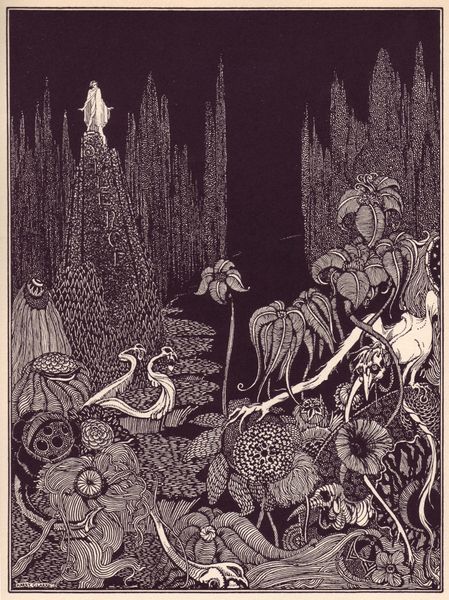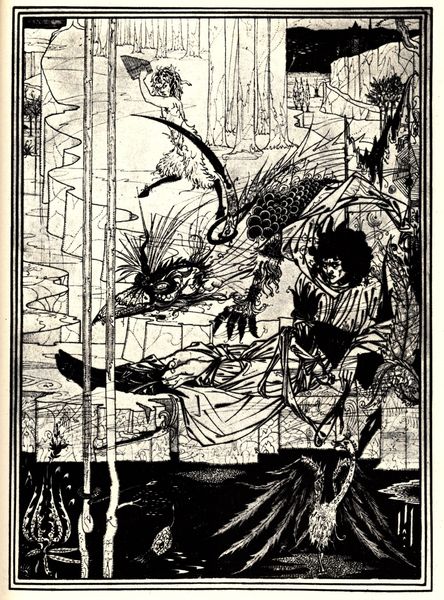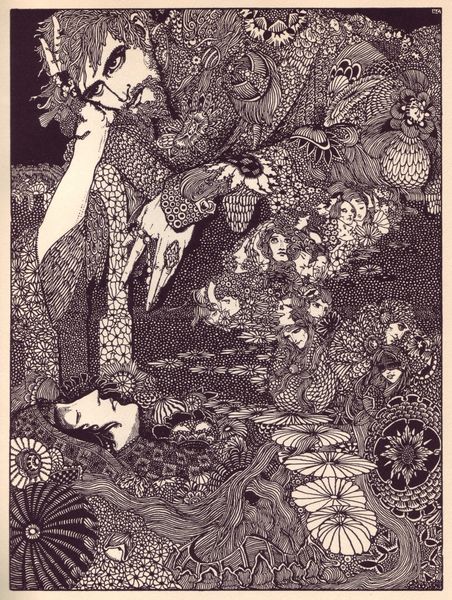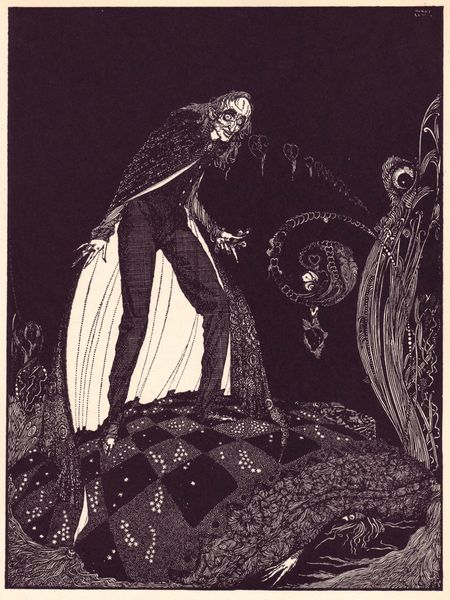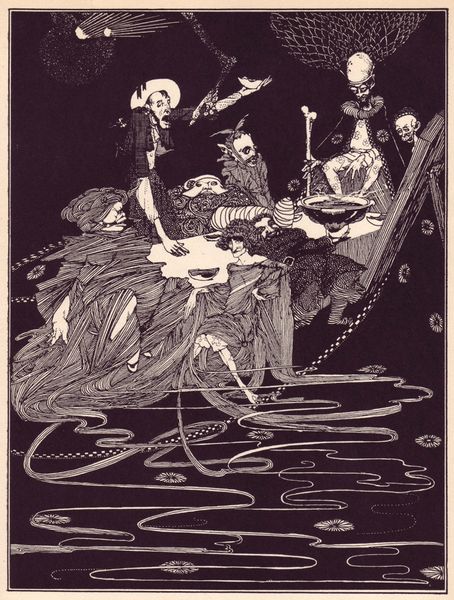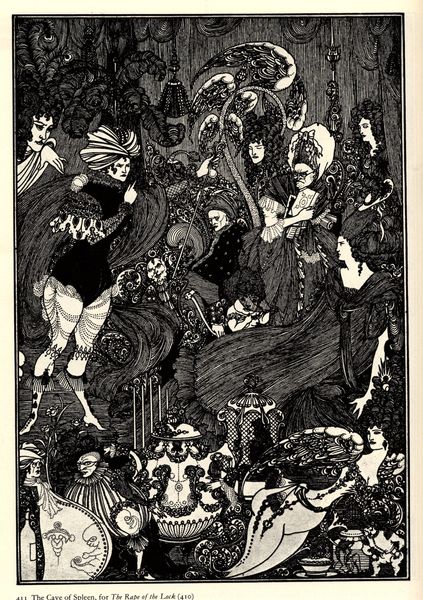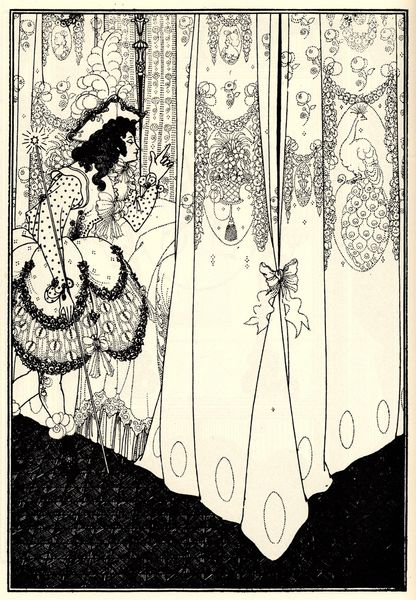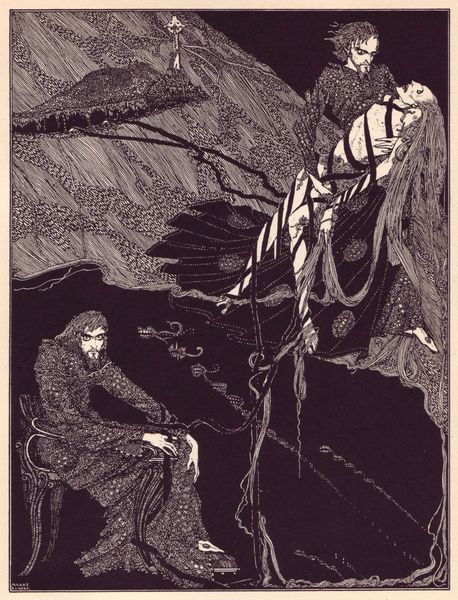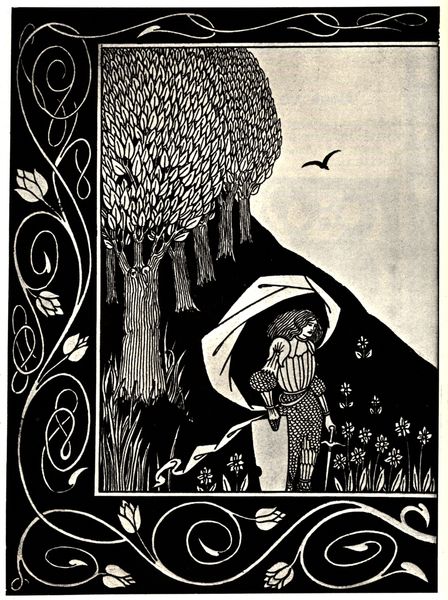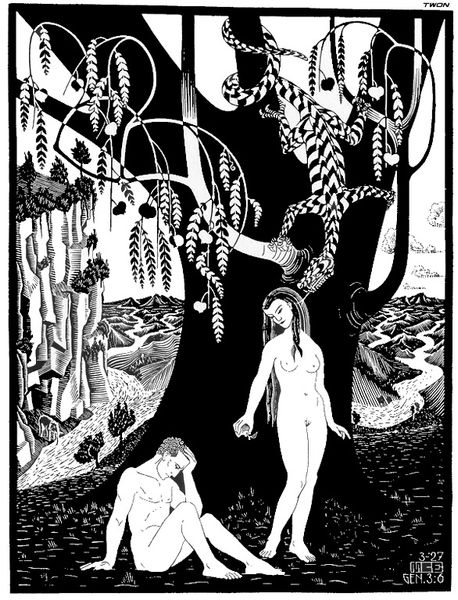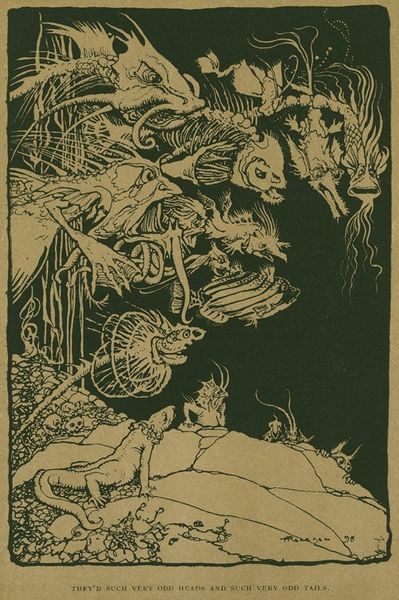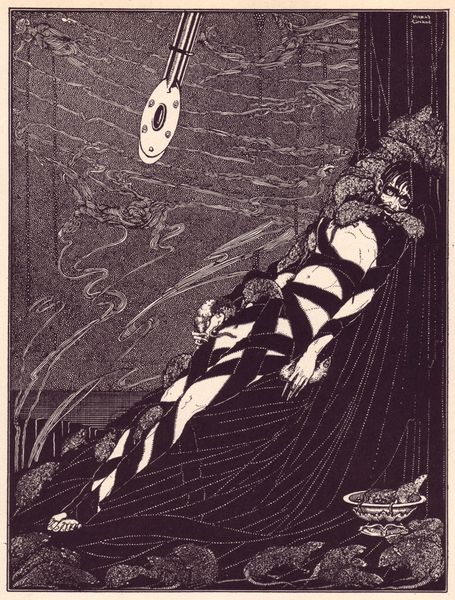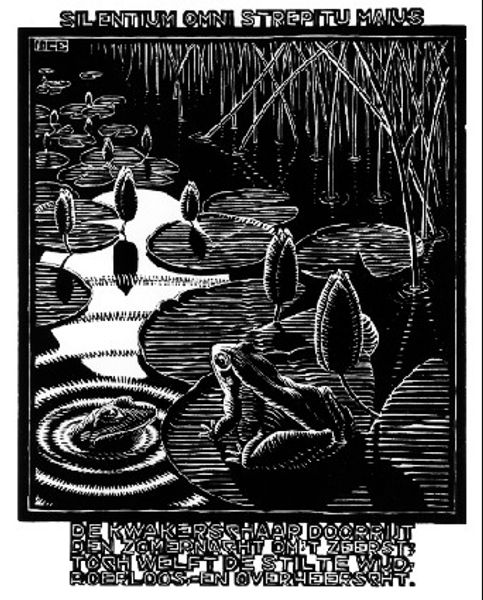
Copyright: Dorothy Lathrop,Fair Use
Editor: Dorothy Lathrop's "The Treasure of Carcassonne," created in 1928, is an intricate ink drawing. There’s a sort of eerie beauty to it. What initially jumps out is the strange, almost surreal quality of the imagery, like a dark fairytale. How do you interpret this work? Art Historian: Indeed. Notice how Lathrop employs potent symbolism. We see figures suspended in an aquatic space: a woman perhaps drowning above, a mermaid reaching, a monstrous figure to the left. The aquatic realm often signifies the unconscious in cultural memory – a space of hidden truths and suppressed emotions. Do you see how the linear quality emphasizes this sense of unveiling, of digging beneath the surface? Editor: I see that now. The stark contrast between black and white makes everything feel more dramatic, heightening the sense of danger and mystery. Art Historian: Precisely. The treasure, hinted but not fully revealed, is the submerged self, confronting these fantastical beings that embody fears and desires. These may symbolize challenges and guardians we encounter when exploring the hidden aspects of our psyche. What narrative or mythic parallels do you see emerging in your mind as you view this illustration? Editor: Maybe a twisted version of a rescue story? I thought of Orpheus descending into the underworld. So it is not about a literal treasure then, but the unveiling of the inner self? Art Historian: That's a fascinating connection. Lathrop taps into something deeply rooted in the collective psyche. The visual language echoes enduring narratives about confronting inner demons and psychological transformation. By using those symbols Lathrop enables this artwork to be emotionally stirring. Editor: That's a completely different way of seeing it than I initially thought! I was so focused on the surface-level fantasy, but it is really more of an illustration of diving deep within. Art Historian: Exactly. Recognizing symbolism allows us to see these types of narratives mirrored in art. The artwork reveals cultural memory by invoking feelings connected to our psychological realities.
Comments
No comments
Be the first to comment and join the conversation on the ultimate creative platform.
